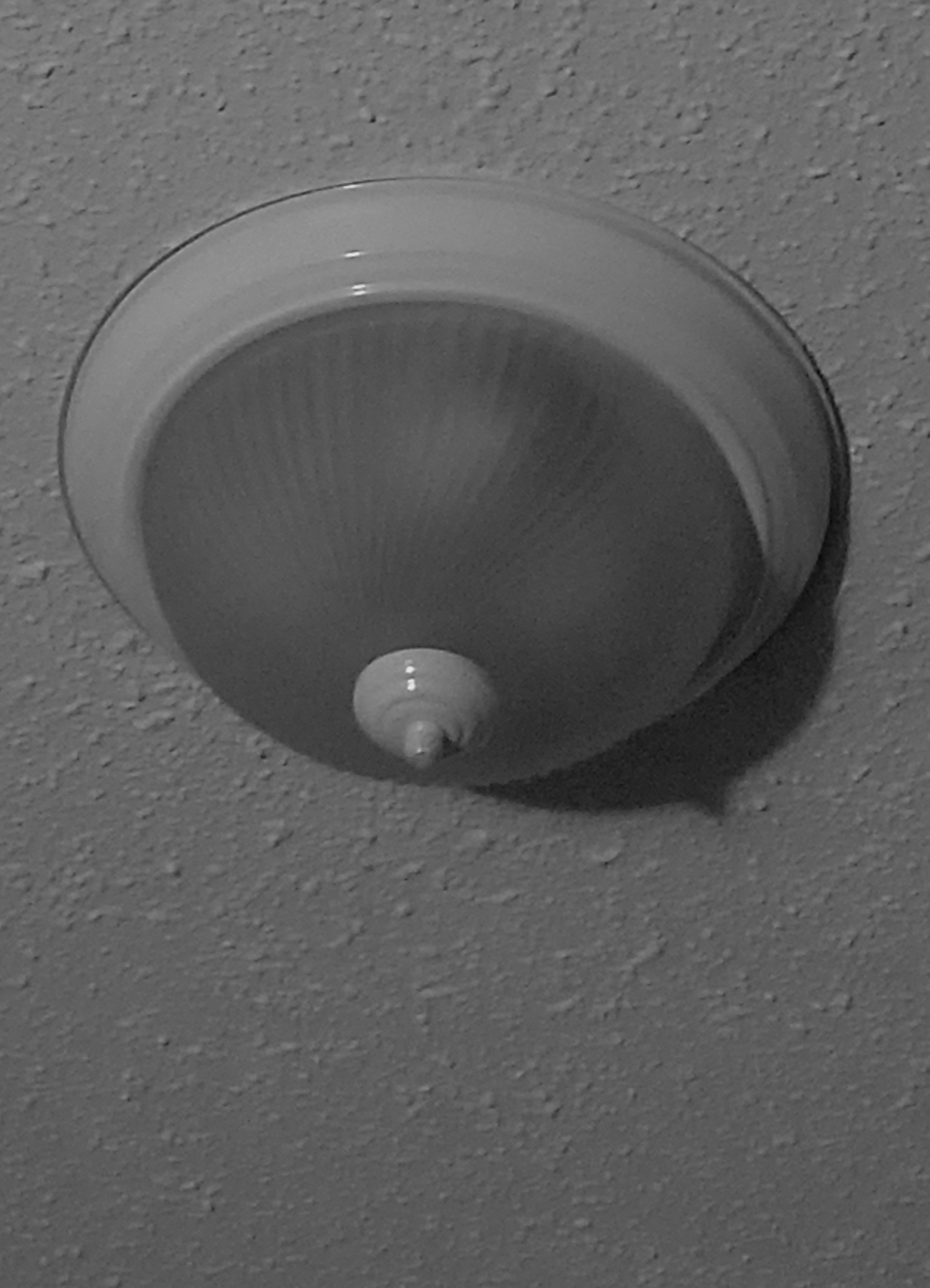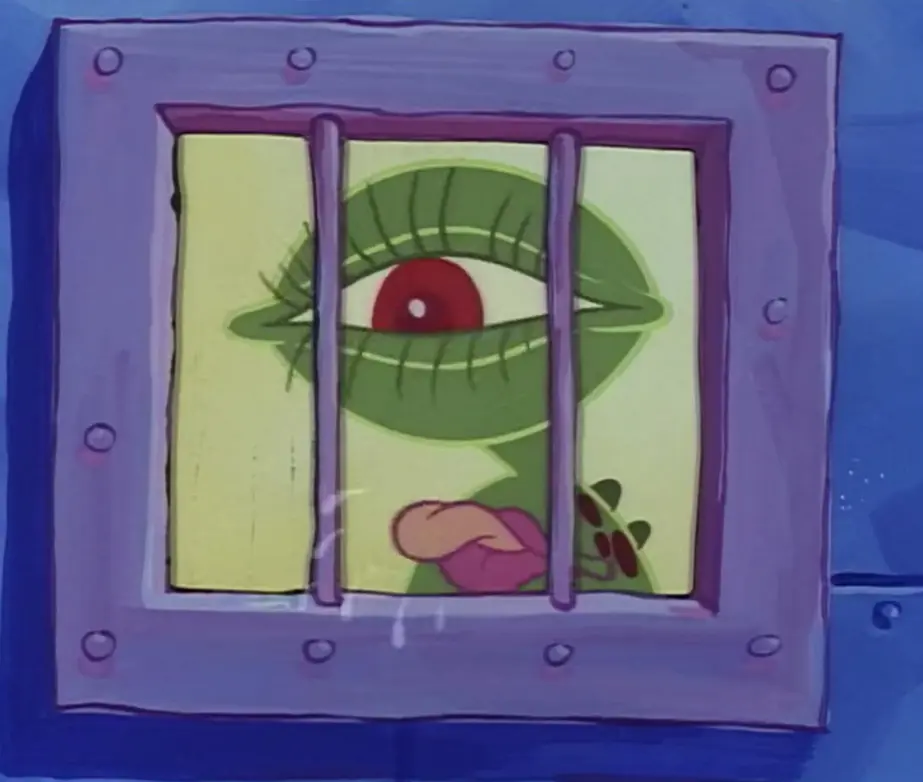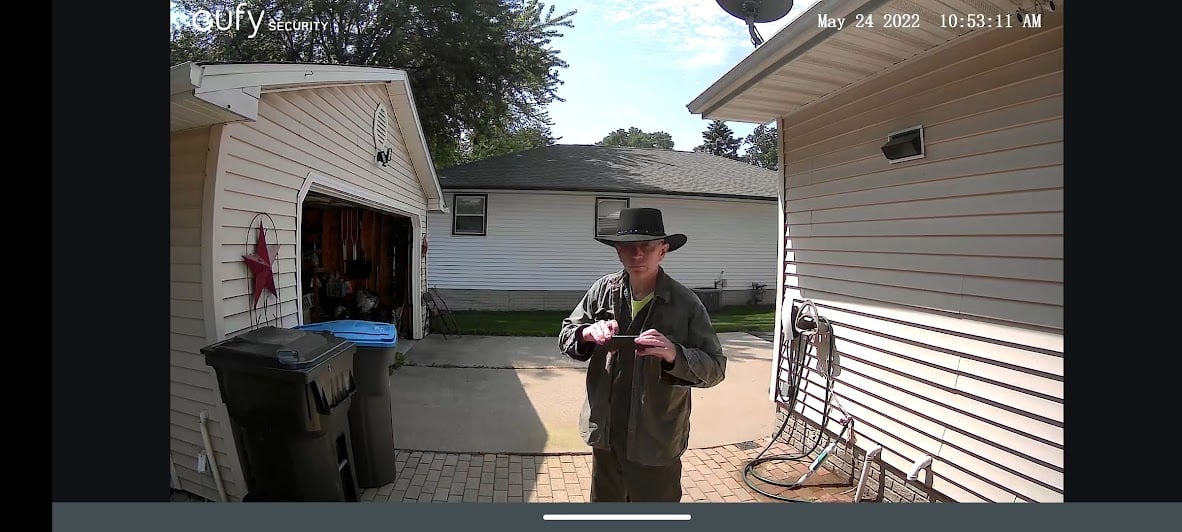Incandescent light bulbs are officially banned in the U.S.::America’s ban on incandescent light bulbs, 16 years in the making, is finally a reality. Well, mostly.
The U.S. is pretty late with this, compared to the European Union. Only a few special bulbs are still sold here. Apart from that, the only allowed lighting technology is LED.
Tell that to the bar I was at last night in Palermo. They had a string of festoon lights going down the laneway and every one of them was incandescent. I noticed the same in Taormina. In fact, Italy seems pretty far behind the rest of the EU when it comes to environmental concerns…but that’s for another thread.
Are you sure they were incandescent bulbs and not just LED bulbs copying the incandescent style? They make a lot of decorative LED bulbs now with straight sections of LEDs to imitate the glowing wire of an incandescent.
Are you talking about an Edison bulb?
This is one example of the LED bulbs I was describing, but there’s plenty of different styles of these being made
Definitely. I’m an electrician, so my eyes are usually drawn to these type of things. Light fittings, outlets, switches, etc.
They are not sold anymore, but whatever is left and working can still be used. Many people also bought a ton of incandescents before the selling stopped (tHe lIgHt is sO mUcH bEtTeR!!!)
tHe lIgHt is sO mUcH bEtTeR!!!)
narrator voice: “but it was not”
It can be. Cheap LED lights with low quality AC rectifiers are awful. If those are your point of comparison then yes, incandescent light is better (more steady).
Of course that difference goes away if you just get a better LED light.
Wait, you’re telling me cheaper products have worse quality?
Even the “cheap” LED bulbs are still many times more expensive than incandescent, and incandescent will give much better light than poor quality LED.
The LED bulbs have a higher up front cost, but ive not come across a single instance where an incandescent was cheaper when factoring electricity costs.
Some also have terrible CRI. Nothing like giving everything a subtle green or purple tint.
yeah, i was referring to current tech. First LED or those mercury vapor bulbs were basically useless.
You can definitely get “current” LED bulbs with bad hardware inside still today. See: Everything made by NOMA.
It generally is though. The look of incandescent and halogen is only rivaled by high end LEDs.
nah. in my experience, even cheaper LED bulbs from discounters can nicely replace old bulbs.
It’s true that what “el-cheapo product” once was done by simply reducing lifetime is currently done with looks.
Maybe they still run on “new old stock” bulbs until they are used up. But even if they do, they clearly didn’t do the math. I’ve upgraded all my lighting to LED and binned all my incandescent stock.
I’m sitting inside a house where, presently, all lights turned on at the same time will require 30w. Before we went through all the lights, a single lightbulb would use 45w.
Just by replacing the old light bulbs, we reduced energy consumption and the number of lights required to light a room.
I think to update the string of lights you’d need to change transformer. Household bulbs have a driver in the bulb that converts the 230V to the ~12V the bulb uses. But for that string of lights, they’d need to get an electrician (or someone who knows what they’re doing)
While you may need to replace the whole strand, and can’t just swap in individual bulbs, the strand itself has the resistors needed to let the LEDs function, instead of the individual bulbs.
This applies to all the things, unfortunately. It must be nice to have a functional union. Even though I’m sure it’s not perfect, progress is made at a decent pace. Our country is hijacked by a cruel/angry/illiterate cult every 1-2 elections, it’s not ideal.
I’ve been in the industry for over a decade and I find it fascinating how much lighting has changed in that time. When LEDs were first available, they were $60+ per bulb. Now you can get multipacks for under $10. Also, CFL bulbs were almost universally hated by everyone (and for good reason) now we no longer sell them. We strictly sell LEDs for regular lighting and we still sell incandescent specialty bulbs. Also, when LEDs first arrived there was a lot of distain for them, especially by the elderly. They wanted their energy wasting incandescent bulbs dammit! It seems the majority of them have come around because they’ve learned that LEDs are better.
Also it became a political issue as all things should be somehow
Yes. Many of the people that objected also wore MAGA hats. I think the whole idea was that it was better for the environment and you know what that means.
I specifically remember trump saying something about bringing back yellow light 😮💨
Yellow street lights are actually very good.
For sure, but if an entire city switches over to LED, that is a lot of electricity saved. Imagine the impact an entire country would have.
No. High pressure sodium lights produce more light for the same wattage. HPS produces 80-140 lumens per watt, LED produces 30-90 (https://ledlightinginfo.com/why-are-street-lights-yellow-and-not-white). They also tend to run slightly warmer which means they are less likely to be covered by snow. That’s why Europe is still using them everywhere.
I think the main issue with initial Led bulbs was their color was wrong. Incandescent bulbs emit light at 2700K, a nice warm white. Early LEDs emitted light at more like 5000K or there abouts, which is a really white light. Same with CFLs. Elderly people didn’t like that at all. Honestly it wasn’t just them, lots of people hated them for their too white of light.
Today you can get LEDs that are 2700K and/or are adjustable to what ever color you want.
Any recommendations? I’ve struggle with LED light color temp off and on over the years. I haven’t looked into it in a while though. It always seems like if you want a low color temp it has to be an edison bulb which is really dim.
On a separate note I’ve also had reliability issues with LED bulbs where they will blow out and emit smoke.
Look for colour names like “soft white” or “warm”. The 2700K is a dead give away for the colour you’re looking for.
Also, separate note: check your appliances or fixtures for power spikes. cheaper LEDs are notoriously sensitive to voltage fluctuations
how would you check for that exactly?
Look closely at packaging. If you’re in North America, Phillips is the most common for bulbs. They have packages marked 2700K, 5000K, and 6500K.
The colours are as follows: 2700- soft white (yellow hue), 5000- bright white (white hue, almost no colour), and 6500- day light (blue-ish hue, similar to fluorescent).
If you end up not being able to distinguish… ask an employee and they should be able to help
i meant checking for power spikes lol
Lol im dumb… forgot it was a 2 pt question.
Cheap way is to buy a surge protector/ power strip with surge protector.
Plug in appliances/lights that burn out faster than others. Periodically check surge protector to see if the internal breaker has been tripped.
Fancy way is to buy a multimeter and monitor voltage when large appliances turn on/off. That’s usually the most likely culprit for voltage spikes (as your home grid has to compensate for sudden increase in usage, which in turn causes voltage to fluctuate slightly)
The most amazing thing to me - I’ve been using leds for 10+ years, and I think I’ve had to replace one or two of them. It is a wonder that prices can come down with demand dwindling so much.
Man, I remember as a kid we had a box of bulbs for when inevitably one burnt out each month or so. Now, I have a drawer with a bunch of led bulbs I’ll never use because they don’t burn out!
I had to replace an LED bulb a few months ago and I remember being annoyed because they did only lasted five years.
I remember when I was a kid, it seemed like we had to change the light bulbs every other month. Now I’m annoyed because these things last so long I don’t keep any spares and I have to leave my house to buy one when it expires!
I can’t remember ever having to replace a dead LED bulb. And only a few CFLs. But I remember replacing incandescents all the time when I was a kid.
My LED burn outs were almost certainly defective, not normal wear.
Is there a brand that’s better for LED? I get migraines and the stroking effect of LED bulbs can be a trigger.
LED christmas bulbs particularly bad. It felt like walking into a rave at the Christmas store.
Regular brand LED bulbs don’t strobe at all, only the very cheap ones from AliExpress and the resellers of Chinese crapware (like Walmart) do. IKEA has some nice and cheap bulbs, for example.
I’ve never been disappointed with Philips. However, I have no doubt there are tons of exceptionally good quality products out there from various brands.
There are LEDs with CCD power converter. I got one 10 years ago and tested it with a 240 fps camera, no flicker at all. I will not recommend a brand because it’s been years,but search for “ccd led bulb”.
Also there’s a number called CRI, indicating how well it represents colors. This also may contribute to your headaches. 85 or higher is good, 90 is great. Just don’t trust these numbers on Amazon, the cheapest of cheap crap is marketed as " cri 90+" there.
Or scratch what I just said and find a small store that specializes in lighting and ask the clerk (or email them).
I wonder if multi-element bulbs offset the phase of each element so the flickering cancels out.
It seems the majority of them have come around because they’ve
learned that LEDs are better.died
they died
deleted by creator
One problem is that CFL bulbs is that they contain small amounts of mercury (about 4mg per bulb). Because of that, disposing of them responsibly requires going through big hassles rather than just throwing them in the trash. Also, because of that mercury, accidentally breaking one means contamination of the environment around the break.
Flickering - always was a big problem for these things.
Longevity: They were very sensitive to heat, which meant that they loved to burn themselves up in a lot of applications.
Dimming: CFLs were NEVER good at being dimmable.
CFL was just a very poor technology detour on the way to the vastly superior LED lights.
The 3 biggest issues CFLs had were their warm up time, especially in cold weather, the flicker some people are sensitive too, and they contain murcury as all florescent bulbs do. That means it is absolutely necessary to properly dispose of them so mercury doesn’t get into the ground water.
This is why I don’t support overreach in regulation.
Put a tax on it or something, but a full ban seems excessive. Now that most people understand that LEDs are superior, they are cheaper, and there are more options, most people will make the switch.
No really. A lot of people, even when shown proof, out of simple spite just double down on their position.
When energy saving and early LED bulbs started to be deployed in my country, while the fade out of incandescent bulbs was put in place, we had runs for buying every single incandescent bulb available. The change was not welcome. Even if changing meant real, objective, tangible savings.
People would put in large orders for bulbs, arguing they wanted to “have proper lighting as long has they lived”. Luckily, the stocks quickly ran out and some distributors simply refused to pass the stocks to the market.
A government cutting off a product is not overreach: it’s forcing change that otherwise would not happen, for the better.
A lot of people, even when shown proof, out of simple spite just double down on their position.
But is it enough to really matter? Especially after the market for incandescent shrivels?
I’m sorry, I’m not following your reasoning. Can you elaborate, please?
People will bitch about the one guy buying all the incandescent bulbs but ignore the fact that everyone else isn’t.
1 old dude isn’t enough to make a difference.
This wasn’t one or two isolated cases: it was a race to the stores.
I was a kid then and my grandparents got caught in the wave and bought more lamps that they required to light the entire house. Which later proved to be of bad quality and aided me in making their transition to energy saving bulbs.
People would line up in front of stores to get the precious, precious bulbs, making the exact same sort of conversation and observations we can read throughout this thread, criticizing government and politics in general.
The store owners would chime in and add fuel to the fire, stating a lot of people would lose their jobs, as the factories would close (cute fact: there was precisely zero factories for those products in the entire country).
People are stubborn and will not change ways unless no other option is available and even then grudgingly, while companies only shift practices if forced, be it by force of law or by cash flow and profit goals.
Governments enforcing positive laws and regulations, even if unpopular, are necessary measures to move things forward in a modern society.
Most people willingly migrated to LEDs when the circumstances shifted in their favor. There was absolutely no law required. The fact that most people are using LEDs before this was even enforced kinda proves my point. The number of holdouts is small enough to be ignored.
Well… only 11 yrs after EU… That’s not so bad.
https://ec.europa.eu/commission/presscorner/detail/en/IP_08_1909
for real though… as an American I would love if we were 11 years behind the EU in lots of other areas
You’re 11 years behind us in energy prices as well, so make the most of it.
Wondering if incandescents can still be sold as heat bulbs because that’s what they are
Yes they can. Also your fridge and oven will still have incandescent bulbs because more efficient lights aren’t great at operating in extreme temperatures.
manufacturers can still build and stores can continue selling:
Appliance lamps, including fridge and oven lights Black lights Bug lamps Colored lamps Infrared lamps Left-handed thread lamps Plant lights Floodlights Reflector lamps Showcase lamps Traffic signals Some other specialty lights, including marine lamps and some odd-sized bulbsWe call them “space heaters”…
What is not banned?
Surprisingly, there is a whole slew of exempt special-purpose bulbs that will continue to be manufactured, according to the Energy Department. Here’s what manufacturers can still build and stores can continue selling:
- Appliance lamps, including fridge and oven lights
- Black lights
- Bug lamps
- Colored lamps
- Infrared lamps
- Left-handed thread lamps
- Plant lights
- Floodlights
- Reflector lamps
- Showcase lamps
- Traffic signals
- Some other specialty lights, including marine lamps and some odd-sized bulbs
I mean, good for the effort, but that’s still a lot of exceptions.
If you still have a fridge or oven that takes incandescent bulbs, isn’t it better to replace the bulb than the fridge? If the point is minimal environmental impact then I think that makes sense.
Well sure but you could just replace it with an LED bulb…
I don’t think you can put an LED bulb in an oven, well I mean I guess you could try but good luck with that, I don’t imagine it would last very long at all.
You can put an LED bulb in a fridge though, I put LEDs in mine. I don’t really need to worry that much about my oven though because it’s a small oven and doesn’t have a light in there to begin with.
I mean why would you force LEDs for ovens in the first place. The place they are in is supposed to get hot. And that’s what the ineffeciency in incandescent light bulbs normally is. They get hot. Doesn’t seam like an issue that they make the place that’s supposed to get hot hot.
This article is dogshit, and those are not the current exemptions. DOE revised the definition of a general service lamp on 2022 to include the majority of reflectors. The rest have miniscule sales and have technical limitations that make LED replacements difficult. It’s not a lot of exemptions. When was the last time you bought a left hand thread or a colored incandescent lamp?
deleted by creator
Seems like it’s a theft deterrent since they won’t work in “normal” sockets?
You need a history expert for this one. I want to say theft deterrent, and possibly different voltages for niche applications. Also Need Flanders Leftorium.
I don’t get the exception for colored incandescent. LEDs come in whatever color you want, or get a smart bulb to change it at will
Some of these bulbs might be difficult to find in LED and there might be other considerations like shape, heat, dimmer compatibility, etc… Replacing the fixture would represent a significant burden in these cases and thought there are many exceptions listed they likely represent a small percentage of overall usage.
I’ve seen dimmer compatible LEDs and, even better, LED bulbs that have built in control of light intensity and even color. I’ve even seen bulbs capable of playing music through bluetooth!
Shape I don’t really see as a concern, as any shape an incandescent bulb can be produced in, a LED bulb can also be. And then some, as the LEDs can be set up, twisted and bent into some very imaginative shapes and angles.
And heat is not ready a concern. You can touch most LED bulbs with your bare hands with no risk of severe burn. Unless very high wattage is in play, at most, a LED bulb will be warm to the touch.
Try not to dismiss everything so quickly. I came up with those in 5 minutes but a committee of experts could find many more. When the exceptions were written they had a reason. A few examples:
-
In a traffic fixture, the heat that the incandescent bulb generates often serves to melt ice, and early traffic fixtures with LEDs did have icing problems. Replacing the fixtures would represent a hug burden.
-
An LED wouldn’t survive in an oven and oven lights aren’t on for very long either so what would it matter?
-
A bulb in a refrigerator could be exposed to condensation.
The exception are there to make sure that a $1 part doesn’t render a $1000 appliance inoperable. Replacing the appliance would undoubtedly generate a ton more carbon than using an incandescent and the rule doesn’t say that LED bulbs are prohibited just that incandescent bulbs for those uses are not yet banned.
LED refrigerator bulbs are already a thing; bought one recently by accident, when looking for a very low power/low brightness for a bed side table.
Those, apparently, are no longer a concern.
Screw in LED bulbs with built in brightness and color control, that you can command from a phone application or through a conventional remote control, are already common, thus rendering conventional dimmers obsolete.
Why keep those? To my very limited knowledge, dimmers can require expensive and extensive installation.
I have seen LED traffic lights with built in anti frost measures and the expenditure to have those replaced is not a good argument to keep that particular use of incandescent lamps around.
LED low power requirements, paired with their long service life, enables traffic lights to be independent from the power grid, through the use of solar panels and batteries, keeping it working even when severe weather disrupts energy distribution. LEDs are also brighter and easier to see from afar.
There may be very particular cases where incandescent bulbs still do not have an alternative but to say they are irreplaceable is a disservice.
I’m not trying to be dismissive, I’m trying to be demanding.
-
And heat is not ready a concern. You can touch most LED bulbs with your bare hands with no risk of severe burn.
This very clearly indicates that you haven’t seriously considered this issue at all, and are just supporting your political faction with no reflection on what the unintended consequences might be.
A common application of incandescent bulbs is to produce heat, for a variety of use cases. The typical example is an improvised chicken incubator.
Consider very carefully why there’s an exception for traffic signals.
This is exactly what I was getting at. There are so many considerations and they clearly put some thought into the exception list even though the reasons may not be readily apparent. The order is not a small step in the right direction it’s a significant step in the right direction and the impact on actual electricity usage is going to be massive.
Black lights
Nice.
They’re lights that emit in the ultraviolet part of the spectrum for the purpose of making fluorescent materials light up. To the human eye they don’t look quite black, but more like a darkish purple.
But yeah, I too always found the name deliciously ironic.
i think it’s a good compromise. the point isn’t to make it impossible to find incandescents, it’s to make sure that for most normal people who aren’t caught up in some culture war bullshit and going out of their way to put incandescents in their house, the easiest option is the most efficient one.
can we ban standard time and permanently switch to DST now too?
DST is the best thing ever. Who doesn’t want more daylight after work?
Oh yay it’s bright at 4am in the morning when I’m asleep.
What about 4am in the evening?
Just pick a time and stick with it
i thought we did?
oh fuck me we didn’t
Senate passed the bill by unanimous consent, although several senators stated later that they would have objected if they had known that the bill could pass. No iteration of the bill has passed the House.
WTF? Why the heck would those people have wanted it to fail and why would they vote for it if they did?
And since it got unanimous consent in the Senate, why the heck didn’t it go to the house? It’s the rare case of a bill that I think everyone likes.
To appease voters
I took a look at the article and I came out with two points:
-
finally! Congratulations! Join the rest of the world where changing a freaking lightbulb costs you no mental pain.
-
left handed light bulbs? Are these a thing? Are these purpose built for specific applications, like counter clock wise screws?
Left handed bulbs are definitely a thing. They’re mostly used for two reasons:
- You don’t want people stealing your light bulbs. Instead of building a ton of secured housing for regular bulbs, you just buy ones people don’t want to steal since their home appliances aren’t threaded the same.
- You need a very specific type of bulb, and don’t want some idiot putting the wrong type in.
Light bulb stealing whores
Never crossed my mind to look for such kind of bulb but I’d risk I won’t be able to find it in the local market.
If safety/security is a concern, lights are simply placed at hard to reach locations or are bought with safety housings, which are fairly cheap. In extremis, instead of common voltage bulbs, high voltage are used, thus incompatible with household voltage.
And specific purpose lamps… I may be the odd one but there are other sockets available in the market. Why opt for the basis threaded one?
-
how long until there’s a right wing black market for incandescent bulbs like gas stoves prob…
There are other uses of incandescent bulb beyond lighting. We use them to heat small enclosures in the winter and we have light to work in the space if that needss to happen. To use heat tape or space heaters is far more likely to catch fire.
And for those uses they aren’t getting phased out:
Surprisingly, there is a whole slew of exempt special-purpose bulbs that will continue to be manufactured, according to the Energy Department. Here’s what manufacturers can still build and stores can continue selling:
Appliance lamps, including fridge and oven lights
Black lights
Bug lamps
Colored lamps
Infrared lamps
Left-handed thread lamps
Plant lights
Floodlights
Reflector lamps
Showcase lamps
Traffic signals
Some other specialty lights, including marine lamps and some odd-sized bulbs
And my lava lamps require the heat they put off.
You can’t be groovy with LEDs
Isn’t that the worse way for your outcome? Isn’t there a more efficient method that reliably heats without light ?
Well 98% of the energy used by an incandescent bulb is given off as Infrared light that you would sense as heat.
Isn’t that a pretty flawed design flaw then. Why not use a heater as a heater rather than a light bulb ? Or like a heat lamp ?
Sometimes you will just introduce more safety issues if you try to overengineer things. In a lot of cases you have to assume that not everything that you want will be easily available and cheap, available and safe will beat some plastic thing ordered from ali express by Walmart.
A waste of only 2% is still a waste.
As far as I understand, energy is conserved. Light inside a closed box will ultimately turn to heat too.
Cure rage in certain circles
Makes sense. Nonetheless, reminds me of modern washing machines. Yeah they make sense and save water but it stinks that it’s a compromise and it takes twice as long to wash. With Led bulbs it’s always a say a prayer situation to see if a particular bulb works with a particular dimmer and isn’t a flickering mess.
Led bulbs won’t even work with my garage door opener for some reason. I have to use incandescent or halogen bulbs.
Typically that’s only a problem if you buy non-dimmable bulbs. There are LEDs made specifically for dimmer switches.
Disagree. Many allegedly dimmable bulbs still have flicker issues, lifespan issues, and in my experience even some dimmers that claim to work with Led dimmable bulbs have different success rates with different dimmable leds.
I don’t have a strong opinion on dimmers as I don’t have any in my house. I personally feel that cutting electricity to the bulb to control brightness is a bit outdated: I think smart bulbs are the better technology to par with LED (though I concede they’re still pretty expensive.)
Per the article, nonstandard incandescents are still allowed to be manufactured.
I wonder if this will have any effect on the film industry…
I had always used incandescent bulbs in practicals but now there are LED bulbs made specifically for film sets. Household LED bulbs are usually a mess on camera with ugly color spikes and/or flickering.
I’ve been lighting almost exclusively with LED these days aside from some HMI’s, but even those are starting to get LED competition, at least for smaller ones.
Thanks for your response! If you light events with broadcast cameras, I am the annoying video engineer behind the camera controls asking about flicker and color balance. I hope they keep making y’all’s specialty bulbs. Looks like there’s a big list of exceptions!
Look at the Power Factor (PF) and Colot Reproduction Index (CRI) of the LED light bulb.
If the former is something like 50% then it means it has a cheap power rectifier inside (little more than a bunch of diodes) which doesn’t at all filter the power fluctuating nature of AC (basically all it does is make the negative side of the sinusoidal wave that’s AC become positve and leaves the whole voltage variance from 0 to max and back untouched) hence the flickering.
The latter quite literally tells you how good the colors look under that lighting. You want at least 90%, with more being better.
Mind you, nowadays CRI is usually not a problem, but the whole cheap power rectification inside the bulb generally is (because a basic power rectifier can cut 10% or more of the manufacturing price of a lightbulb).
Cri is a common specification I see, even if I suspect lots of lying. Where do you find PF information? I don’t remember ever seeing it on any bulb packaging before.
Yeah, that’s the problem: PF is not mandatory to be in the packaging so it’s not usually there.
If you buy online, sometimes you can find it in the product information section.
I’ve noticed that the “usual chinese sellers” will mention it if it’s good (say, 80%) but not when it’s the cheap-converter one (50%).
Alternativelly when looking for the bulbs not likely to flicker you might also look for the “dimmable” ones, as the abiloty for a light lamp to support an external dimmer requirex a better power converter inside the bulb.
I would think they’ll be mostly over to LED by now.
electric companies started subsidizing LEDs 10 years ago at box stores. electricity use went down and the bills went up as usual. all the while still burning coal. 🤔 incentives? probably part of the same mandates taxes get spent on
Once they got the white light spectrum figured out I was fine with switching to leds. Less power, don’t get hot, last longer.
I wish the LEDs weren’t such crap. They don’t even last as long as a 60W incandescent a lot of times. The old CFLs last years, I have a few over ten years old.
I’m curious about what fixtures your led light bulbs were in.
Old incandescent lights worked great at high heat levels, so a typical boob light fixture that kept the heat in would be fine for an incandescent. Put an LED light in there, and it can still heat up beyond design capacity and might not get enough ventilation and age prematurely.
The only leds that failed for me were inside a fixture meant for incandescent lights. All our open bulbs or specially designed for led fixtures have been going strong for half a decade or more.
Planned obsolescence is a thing here. The LEDs don’t fail, it’s the power circuitry. Unfortunately the fixture theory doesn’t pan out, as fixtures meant for incandescent bulbs need to be able to dissipate much more heat (about 6 times as much). I’ve been using LED bulbs for 7 years in all sorts of different fixtures and have never had even one burn out on me. Why? I don’t really know. Maybe I turn the lights on less often than other people?
It’s more likely that the cheap ones are just using a driver board so cheap that it cannot tolerate the heat at all to cut costs, and the bulb dying sooner is just a nice side effect of that.
It’s best to just not buy the cheapest bulbs. I’ve had good luck with Philips.
I have a 10+ year old LED bulb of corn type, made by a local manufacturer. Works great to this day. It outlived a few generations of store-bought crap like Philips and Emos in the rest of the house.
Stoned me read boob light and was like, ‘oh ya’. But I gotta make sure, we mean like

(image of a dome light cover with a protruding “nipple” at it’s highest point-- making it breast-like in appearance.)
Exactly 😆
I can’t think of another term for them.
Getting rid of them made our place look a lot less like 1997
can confirm, these are boob lights. even my wife uses the term. ripped every one out shortly after we moved in.
My apartment has one of those light fixtures in the living room and it uses a dimmer dial. I once tried to replace the incandescent bulbs with what seemed to be the LED equivalent that could be used with a dimmer, but it just didn’t work right. Lots of flickering. I hope this will convince my landlord to replace the fixture so I can finish changing everything to LED.
There are different types of dimmers to work with different types of bulbs. You may get better results with a summer rated for LEDs
For dimmers, you either need smart bulbs that do it themselves or a dimmer switch that you know is guaranteed to work with that bulb, it’s tricky. Also, LED lights that get warmer (change colour tone to a more orange colour) as they dim are far more pleasing than just dimming since they emulate what incandescent bulbs do. Sometimes if the power supply to your unit or building is choppy leds are the first to show it, so hope it’s not that.
Good luck with your landlord, let’s hope they’re a good one.
This hasn’t been my experience at all, I replaced most of the bulbs in my house with LEDs a couple years ago and I don’t think I’ve had to replace a single one since. When they were all incandescent, I was regularly replacing burned out bulbs. Check which brand you’re buying, you’re probably buying crap which is why you’re getting crap. I’ve found Phillips bulbs work great and are long lasting, I have done that’ve been in a fixture for 5 years now with no issue
I don’t know what kind of crap LED light bulbs you get in the US but here in Europe to to get a CE mark (required to be able to import them into the EU) a model has to have less than 5% failure rate within (if I remember it correctly) the first year, last 10,000h at least (and have been tested for it, which is quite funny because the test requires having the thing always on for months), turn on within a second, lose (due to burn-in) less than a few percent (forgot the number) brightness within the first 6 months and a bunch of other requirements including stuff like color fidelity.
About a decade ago I actually looked into starting a business importing those things from China and still tody have several samples from back then still working fine (and that’s also why I know the CE mark requirements for LED light bulbs).
More in general I’ve been using LED lamps for even longer and even back in the day when they were more expensive those things paid for themselves in lower power costs, and often do so quite fast (a couple of months) when used to replace incandescents, plus the rate of failures is now pretty low.
(When I first replaced all my lightbulbs with LEDs, way back when they weren’t even as efficient as now, the fall in the electricity bill was very noticeable)
Oh, and the price of those things at the factory has been less than $1 for ages, so stores trying to sell those for more than $2 have huge markups and you’re better of avoiding those places and getting them from hardware stores and similar (or just buy online).
Mostly capacitor plague or heat. I’ve only lost 2 / 50 in Open fixtures with good airflow over the last three years.
I have one outdoor that pops every spring the fixture is damn near sealed and in direct sunlight, but the HOA demands the fixture.



















